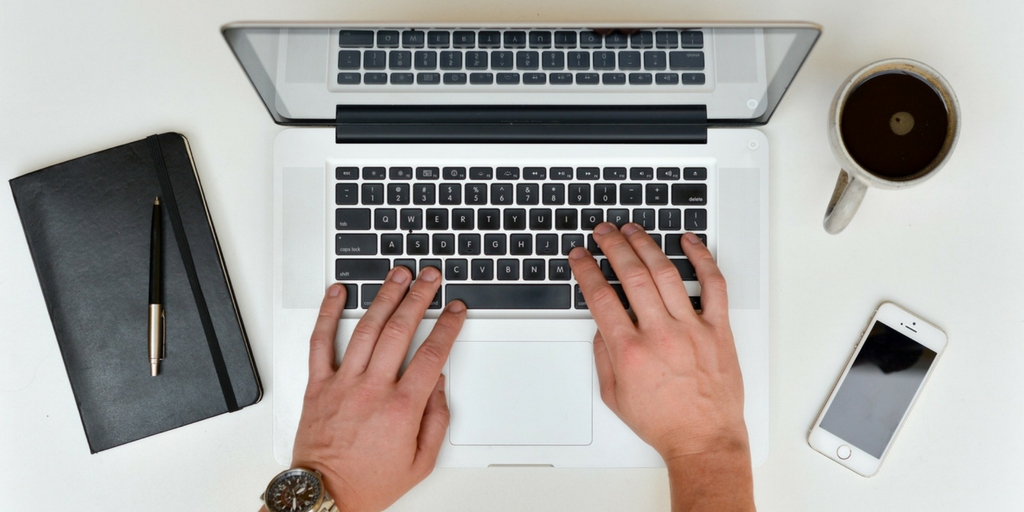
by Fronetics | Jul 12, 2017 | Blog, Content Marketing, Logistics, Marketing, Social Media, Supply Chain
Here are our 10 most popular articles covering supply chain and digital marketing, based on our mid-year analysis.
If you ever read this blog, or are familiar with Fronetics, you know we’re big advocates of regularly measuring and analyzing metrics that help you assess your marketing efforts. We don’t just say that: We actually practice what we preach. In fact, I was recently a mid-year audit of our blog content for this very reason.
That’s why I know which articles have been the most read this year. And I know (from past analysis) that our readers really appreciate having curated lists of popular content, so I wanted to share with you our top 10 supply chain and digital marketing articles in 2017… so far.
Top 10 supply chain and digital marketing articles of 2017 (as of 7.1.17)
These are our picks for the best blogs in the logistics and supply chain industries. They cover a range of topics, from technology to strategy, and feature thought leadership by some of the brightest minds in the field. Read post
This guest post from Argentus Supply Chain Recruiting, a boutique recruitment firm specializing in Supply Chain Management and Procurement, includes an infographic shedding light on the differences between these often-confused functions. Read post
Buzzsumo’s Steve Rayson used data to analyze patterns the most popular content posted on LinkedIn in 2016. He identified headlines and topics that were most successful. The results are really interesting and say a lot about what content resonates with the general LinkedIn community. Read post
With social media networks changing daily, it’s hard to keep up with where to distribute content, much less how often. Countless studies have attempted to solve the social-media-frequency equation. And while audiences vary across industries, best practices give us some general guidelines. Here’s our assessment of social media posting frequency. Read post
Ellen Voie is successfully breaking down barriers and changing the perception of the trucking industry. As founder and president of Women In Trucking (WIT), Voie and her team work to promote the organization’s mission “to encourage the employment of women in the trucking industry, promote their accomplishments, and minimize obstacles faced by women working in the industry.” I interviewed her about her path to success. Read post
Every year we ask our readers to vote for the best industry blogs. The results are always interesting — there’s really a lot of great supply chain and logistics content out there, plus it’s great to see where our readers are finding value. This year, they voted Morai Logistics, Women in Trucking, and the Oracle Supply Chain Management Blog as the top 3 logistics and supply chain blogs of 2017. Read post
There is a lot of research out there that highlights the optimal time to post on various social media platforms. But, the truth is, there is no one-size-fits-all social media posting solution. You need to know the best time for your business to post content. You want more than just a general idea of when to post. You want specific information about your target audience — when they’re actively scrolling, reading, watching and liking your content. These tools can help. Read post
Instagram’s recently launched feature, Instagram Stories, offers marketers a new platform for content delivery that is wildly popular with millennials (who are shaping B2B buying). But unlike other networks with short-term video-sharing opportunities (ahem, Snapchat), Stories can have a polished, professional feel that well suits B2B brands. Here’s what they are and some ideas for how to use them. Read post
This article is part of a series of articles written by MBA students from the University of New Hampshire Peter T. Paul College of Business and Economics. Jacob Rossman discusses the inevitable rise of autonomous trucks and the social and economic factors driving the progression of their technology. Read post
Another article by an MBA student, Meghan Sargent looks at Starbuck’s often-studied supply chain management practices, which, according to some, make Starbucks’ coffee and customer experience superior to those of its competitors. She asks: What exactly is Starbucks doing differently than other international coffee retailers? Is its coffee truly better? Read post
Honorable mentions
I couldn’t leave out these posts, which almost cracked the top 10!
We strive to be a go-to resource for all things digital and content marketing for the supply chain and logistics industries. If there’s a topic you’d like us to cover, please let me know in the comments below, or feel free to email me directly.
And — shameless plug warning — subscribe to our blog to get the latest content delivered to your inbox on a weekly basis! (Sign up on the right.)
Related posts:


by Elizabeth Hines | Jul 10, 2017 | Blog, Consumer Electronics, Manufacturing & Distribution, Strategy, Supply Chain
With increasing consumer demands comes an increasing need for electronics manufacturers to adapt and change with the times.
Manufacturing operations strive to increase demand fulfillment and to reduce costs. But, too often these objectives seem mutually exclusive in practice. In fact, a 10-year study by Accenture of nearly 250 businesses across industries and sectors found that only 11% were meeting both goals.
So what are the 11% doing differently? Interestingly, the study found that operational flexibility was the common thread binding these companies together. What’s more, they were able to achieve flexibility, reduce costs, and increase demand by adhering to three key principles of operations.
3 pillars of operational flexibility
1) Keep it simple.
It can be difficult to keep up with the growing market demand for product customization while maintaining low overhead costs. But the answer is not fewer SKUs — in fact, quite the opposite. Successful manufacturers have increased product variants while reducing the number of components in each SKU, simplifying production.
A prime example of this is Toyota, which is transitioning from 100 different platform variants to five standard platforms across all its models. The brand will maintain design variation in accompanying components and interior choices. Toyota expects this will enhance the customer driving experience while reducing factory costs by 40% and manpower by about 20%.
2) Embrace digitization.
The supply chain is a series of steps toward getting the product in the hands of the end user. Digitization can break down barriers between steps so the supply chain becomes one integrated process. By offering faster responsiveness through digitalization, businesses can better meet consumer demand in timely manner.
Additionally, digitization can help reduce costs associated with production. An example of this is the use of 3-D printing. Traditional manufacturing processes for building a part are subtractive, creating a lot of scrap and wasted material as a byproduct. Not so with 3-D printing, an additive process using the minimum material necessary to fabricate a part. Less wasted material equals less wasted cost.
3) Develop multi-skilled labor.
Investing in a workforce that can adjust and handle multiple duties is an important aspect of operational flexibility. By cross-training employees, manufacturers are better able to optimize time and effort.
Honda’s ARC line, which trains line members across multiple tasks, offers a prime example. Not only are employees more capable of assessing and solving problems, Honda has been able to improve work efficiency by 10%.
Variables
With increasing consumer demands comes an increasing need for electronics manufacturers to adapt and change with the times. And there will always be unexpected variables and market fluctuations that require operational agility. But by being faster, more flexible, and cheaper, businesses can continue to increase demand fulfillment while effectively managing costs.
This article originally appeared on EBN Online.
Related posts:

by Fronetics | Jul 3, 2017 | Blog, Content Marketing, Current Events, Marketing, Supply Chain
Blog aggregation site Feedspot included Fronetics’ blog on its list of the best content for the supply chain.
Fronetics is honored to learn that our blog has been included on Feedspot’s list of the top 75 supply chain blogs and websites for supply chain professionals. The blog aggregation website has indexed thousands of supply chain blogs and pulled out the most popular using search and social metrics.
Feedspot explains its methodology. “These blogs are ranked based on following criteria:
- “Google reputation and Google search ranking
- “Influence and popularity on Facebook, Twitter and other social media sites
- “Quality and consistency of posts.
- “Feedspot’s editorial team and expert review.”
We are in excellent company on this list. And we love seeing friends and frequent content collaborators like Argentus and SCM Talent Group among the best of the best as well. These are the places where we turn for supply chain thought leadership, and are humbled to be included.
Fronetics strives to be a leading industry resource for information about digital and content marketing, so it is very exciting to be recognized in this way. Thank you to Feedspot, our contributors, and all of our readers who turn to Fronetics for the latest information about content marketing, social media, and more news and happenings in the supply chain industry.
Related posts:

![What’s the Difference Between Supply Chain Management and Logistics [Infographic]](https://fronetics.com/wp-content/uploads/2024/10/Supply-Chain-Managementvs.Logistics.jpg)
by Jennifer Hart Yim | Jun 29, 2017 | Blog, Logistics, Supply Chain
Argentus’ infographic sheds light on the differences between these often-confused functions.
This guest post comes to us from Argentus Supply Chain Recruiting, a boutique recruitment firm specializing in Supply Chain Management and Procurement.
Both Logistics and the wider Supply Chain are vital to how companies run today, but the two are still so often confused. We put together an infographic outlining some of the key differences and points of overlap between them. While it may be an obvious distinction to many pros across the field, there’s still a lot of ambiguity – sometimes within companies, as well – about what constitutes Logistics, and what constitutes Supply Chain Management. As a recruitment firm with over a decade of experience specialized in this area, we figure we’d weigh in!
In short, Logistics is a part of Supply Chain Management that deals with the physical movement of goods for just in time delivery. Supply Chain, as a field, grew out of Logistics in the 80s to encompass a wider strategic consideration of everything that’s involved in bringing a product to market.
Check out the infographic below, where we dive into the topic in more detail! We’ve stepped up our game, if we do say so ourselves.
Logistics vs. Supply Chain Management

We hope you found the infographic informative! Weigh in down in the comments if there’s anything we missed, or more you have to add about the differences between these functions.
Related posts:

![The 2017 4th of July Supply Chain [Infographic]](https://fronetics.com/wp-content/uploads/2024/10/4th-of-july.jpg)
by Fronetics | Jun 27, 2017 | Big Data, Blog, Current Events, Data/Analytics, Logistics, Supply Chain
U.S. Consumers plan to spend a whopping $7.1 billion on cookouts for 4th of July celebrations.
The National Retail Federation reports that 219 million Americans plan to celebrate the 241st Independence Day. Two-thirds plan to attend a cookout, barbecue, or picnic, spending an average of $73.42 per household on food items, up from last year’s $71.34. That’s a lot of hot dogs!
And what’s a Fourth of July celebration without fireworks? 44% of Americans plan to attend a fireworks show or community celebration. The U.S. will use approximately 285.3 million pounds of fireworks, totaling $1.09 billion dollars. More than 15,000 firework displays will glitter the skies to mark the special occasion.
Recognized as the nation’s largest Independence Day celebration, the Macy’s 4th of July Fireworks display attracts more than 3 million spectators live and over 10 million TV viewers. The firework display in Washington, D.C., comes in second with over 700,000 viewers from the nation’s capital.
And due to a number of factors — including strong employment and the low price of gasoline — a record number of people will travel out of town this year to celebrate the holiday. NRF estimates 32.9 million, while AAA estimates it will be closer to 44.2 million travelers.
At Fronetics, we wish you and your family a safe and fun Fourth of July celebration. Here are a few more fun facts to get you into the patriotic spirit.
A 2017 4th of July Infographic for the Supply Chain

(Made with Canva)
Related posts:
![12 Steps to an Effective Content Strategy for the Supply Chain [Slideshow]](https://fronetics.com/wp-content/uploads/2024/10/12-steps-to-an-effective-content-strategy-1.jpg)
by Fronetics | Jun 26, 2017 | Blog, Content Marketing, Marketing, Strategy, Supply Chain
Learn how to stand out from the crowd with a content strategy that drives profitable customer action.
According to a survey of supply chain and logistics marketers by Fronetics, 86% are using content as a marketing tool. Respondents report using content marketing primarily in order to:
- Increase brand awareness (96%)
- Generate leads (83%)
- Establish the company as an industry leader (74%)
- Engage customers (74%)
By consistently creating and distributing valuable, relevant content, you can attract a clearly defined audience — and, ultimately, drive profitable customer action. But how do you know what your audience will find valuable and relevant?
Throwing spaghetti at the wall to see what sticks certainly won’t get your desired results. Since 3 billion pieces of content are shared online everyday, you have to be strategic and thoughtful about your content in order to stand out from the noise (and your competitors). It takes time, careful research, and strategy to build a content marketing program that helps achieve your business goals.
At Fronetics, we specialize in helping supply chain and logistics companies create and execute digital and content marketing strategies. So we’ve learned a few tricks of the trade over the years. For example, did you know that explicitly designating a specific person to lead your content strategy can improve its effectiveness by 40%? Or that documenting your strategy can make it three times as effective?
We’ve put together a quick slideshow specifically for supply chain and logistics businesses who are looking to learn about content marketing and build a content strategy that will be effective in growing brand awareness, generating leads, engaging customers, and establishing their brands as industry leaders.
12 Steps to an Effective Content Strategy will help your business identify the key steps to getting the most out of your content marketing efforts. Download the slideshow to get started growing your business with content!

Related posts:






![What’s the Difference Between Supply Chain Management and Logistics [Infographic]](https://fronetics.com/wp-content/uploads/2024/10/Supply-Chain-Managementvs.Logistics.jpg)


![The 2017 4th of July Supply Chain [Infographic]](https://fronetics.com/wp-content/uploads/2024/10/4th-of-july.jpg)

![12 Steps to an Effective Content Strategy for the Supply Chain [Slideshow]](https://fronetics.com/wp-content/uploads/2024/10/12-steps-to-an-effective-content-strategy-1.jpg)
